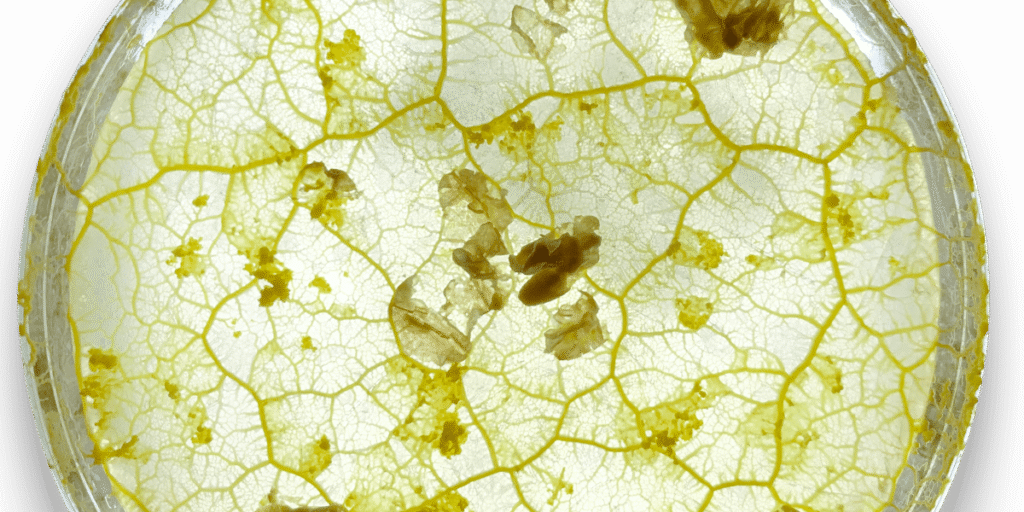Officially known as Physarum polycephalum, slime mold is neither plant, animal, nor fungus but a single-celled organism older than dinosaurs. When searching for food, it extends tentacle-like projections in multiple directions simultaneously. It then doubles down on the most efficient paths that lead to food while abandoning less productive routes. This process creates optimized networks that balance efficiency with resilience—a sought-after quality in transportation and infrastructure systems.
The organism’s ability to find the shortest path between multiple points while maintaining backup connections has made it a favorite among researchers studying network design. Most famously, in 2010 researchers at Hokkaido University reported results from an experiment in which they dumped a blob of slime mold onto a detailed map of Tokyo’s railway system, marking major stations with oat flakes. At first the brainless organism engulfed the entire map. Days later, it had pruned itself back, leaving behind only the most efficient pathways. The result closely mirrored Tokyo’s actual rail network.
Since then, researchers worldwide have used slime mold to solve mazes and even map the dark matter holding the universe together. Experts across Mexico, Great Britain, and the Iberian peninsula have tasked the organism with redesigning their roadways—though few of these experiments have translated into real-world upgrades.
Historically, researchers working with the organism would print a physical map and add slime mold onto it. But Kay believes that Mireta’s approach, which replicates slime mold’s pathway-building without requiring actual organisms, could help solve more complex problems. Slime mold is visible to the naked eye, so Kay’s team studied how the blobs behave in the lab, focusing on the key behaviors that make these organisms so good at creating efficient networks. Then they translated these behaviors into a set of rules that became an algorithm.
Some experts aren’t convinced. According to Geoff Boeing, an associate professor at the University of Southern California’s Department of Urban Planning and Spatial Analysis, such algorithms don’t address “the messy realities of entering a room with a group of stakeholders and co-visioning a future for their community.” Modern urban planning problems, he says, aren’t solely technical issues: “It’s not that we don’t know how to make infrastructure networks efficient, resilient, connected—it’s that it’s politically challenging to do so.”


